10 animals that have been launched into space
Four-Legged Astronauts
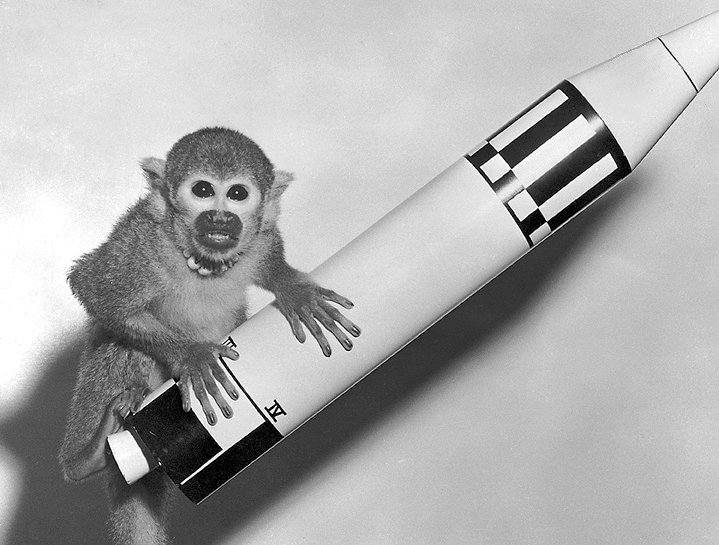
Before humanity ever rocketed past the edge of space, let alone into Earth orbit, and before man ever stepped foot on the moon, our four-legged (and sometimes legless) friends tested the ether. Plenty of animals, from dogs and cats and even chimps to worms and frogs, rode into space aboard various rockets. At first the often adorable astronauts were a means for testing the ability to launch a living organism into space and bring it back alive, though various animals have been sent into space to test other phenomenon, including motion sickness and radiation.
Space menagerie

Since the 1950s, several countries have sent fish, rodents — including the Argentine rat Bellisario — the Soviet Horsfield Tortoise and rabbit Marfusa and the U.S.-sponsored mice Amy and Sally, into space. What have we learned from such space-y animals? Turns out, fish and tadpoles swim in loops, rather than straight lines, because there is no up or down in microgravity to orient them, according to NASA. Baby mammals, it seems, have a tough time in spaceflight, as the furry creatures can't easily huddle for warmth as they normally do while floating; they also have difficulty locating their mama's nipples, making nursing tricky.
Laika

On Nov. 3, 1957, a female part-Samoyed terrier made history when the furball became the first animal launched into space, riding into orbit aboard the Sputnik II spacecraft. Originally named Kudryavka (or "Little Curly" in English) and later called Laika (Barker), the 13-pound (6-kilogram) dog was nestled in a pressurized cabin during the one-way trip — since the technology to safely return a payload to Earth didn't exist at the time, Laika was provided with 10 days' worth of oxygen.
However, the pup likely only survived a day or two, according to NASA. The mission gave scientists the first data on animal behavior in space; apparently Laika showed signs of agitation, though she did eat her food.
Ham, the Chimp
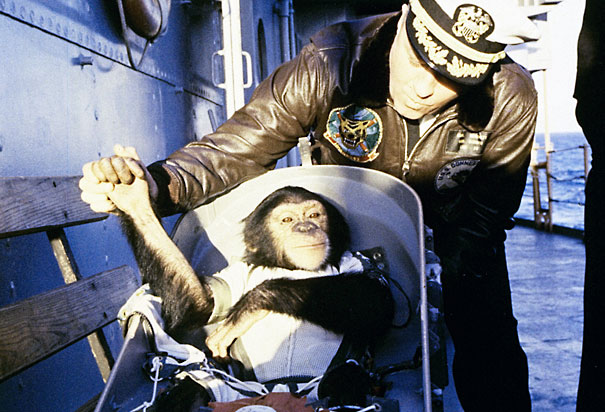
Named Ham, the first chimp to get its "space stripes" rode into sub-orbit aboard the Mercury Redstone rocket, reaching an altitude of 157 miles (253 kilometers) on Jan. 31, 1961. During his 16.5-minute flight, Ham experienced 6.6 minutes of weightlessness before splashing down into the Atlantic Ocean. The chimp showed signs of fatigue and dehydration, though medical examiners gave him a good bill of health otherwise.
Ham, which is an acronym for Holloman Aero Med (the air force base where he came from), spent the next decade-plus on display at the Washington Zoo, before being moved in 1980 to the North Carolina Zoological Park. Ham died on Jan. 17, 1983; his skeleton was kept for ongoing examination, while his other remains were laid to rest in front of the International Space Hall of Fame in New Mexico.
On Nov. 29, 1961, Enos became the first chimpanzee to reach Earth orbit, circling the planet twice aboard a Mercury Atlas rocket. Enos died at Holloman Air Force Base due to dysentery 11 months later.
Get the world’s most fascinating discoveries delivered straight to your inbox.
Chubby monkey
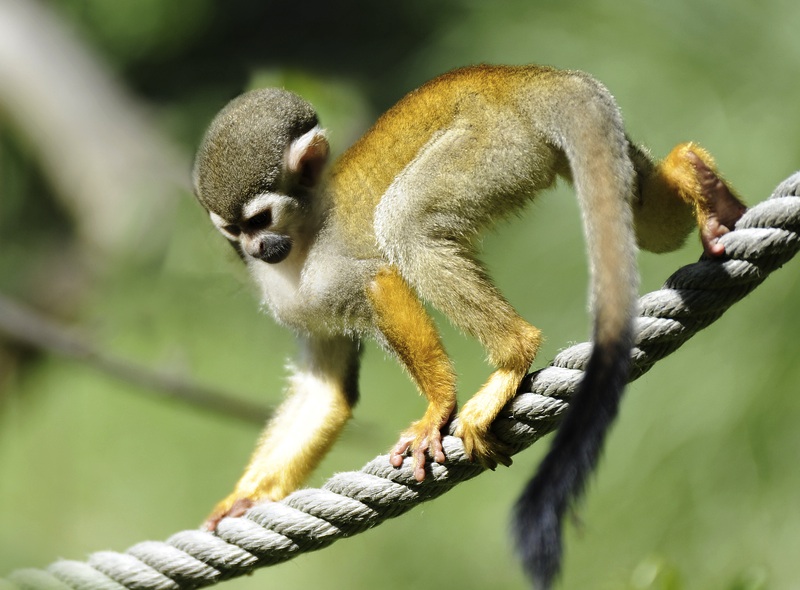
In 1958, the Navy trained a squirrel monkey named Gordo to travel on an intermediate-range ballistic missile. Unfortunately, when the parachute attached to the nose cone failed to deploy, Gordo was lost. Later, scientists looked at sensor data from the monkey and found he had survived the launch, several minutes of zero gravity, and 10,000 mile per hour speeds back down to Earth. The cone, and poor Gordo, sank at Cape Canaveral in Florida. (Shown here, a common squirrel monkey.)
Space survivors

Able and Baker were the first monkeys to make it back from space alive. In 1959, the rhesus monkey Able and the squirrel monkey Baker flew on an intermediate-range ballistic missile's nose cone. They were weightless and reached a top speed of about 10,000 miles per hour (16,093 kilometers per hour).
While they made it back in good spirits, Able died four days later from anesthesia during surgery to remove an infected electrode. Baker spent the rest of his days at the U.S. Space and Rocket Center in Huntsville, Ala., before passing away in 1984.
Cat cadets
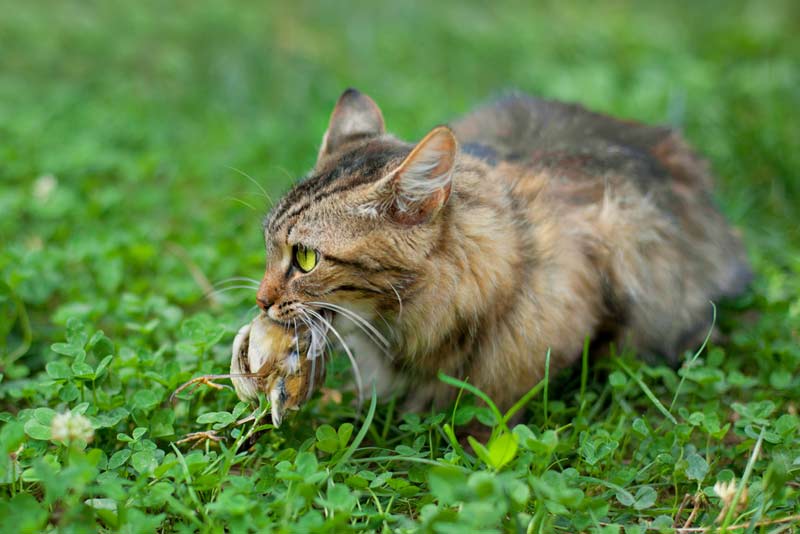
In 1963, the French space program planned to launch Felix the cat into space. The wily cat escaped and the space program had to send his female body double, Felicette, according to some reports. Electrodes on the cat's brain transmitted data to the ground, before the cat was successfully recovered. Another feline flight attempted on Oct. 24 of that year reportedly failed and the cat wasn't recovered.
Space Spiders!
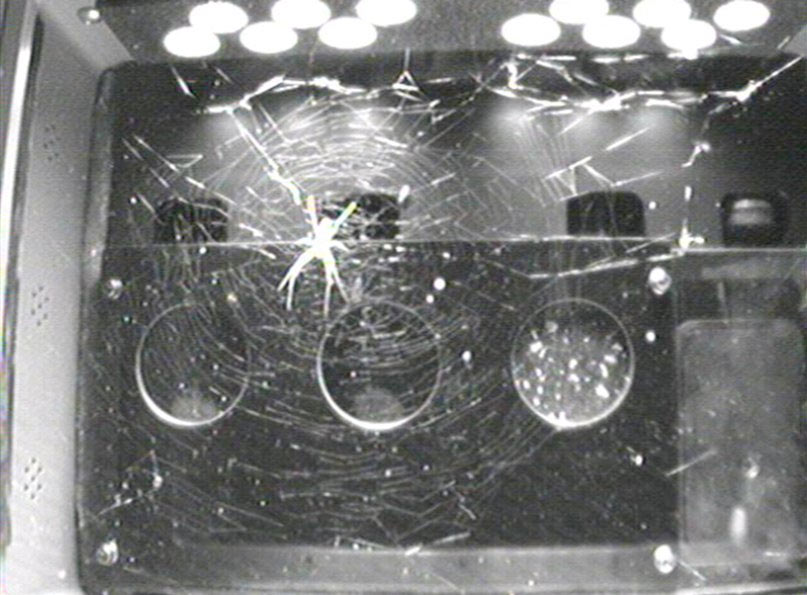
The animal payload diversified after the landing of Apollo 11 to include turtles, rabbits, spiders, fish, jellyfish, algae, amoeba and insects. On July 28, 1973, on the last Apollo flights, Skylab 3 housed some creepy-crawlies: Anita and Arabella, two common cross spiders, which were being monitored to see how they spun webs in space. The spiders are on exhibit at the Smithsonian's National Air and Space Museum.
In 2011, two golden orb spiders (shown here) — dubbed Gladys and Esmeralda — were launched aboard the space shuttle Endeavor to the International Space Station, where astronauts observed their behaviors in microgravity.
Flying frogs
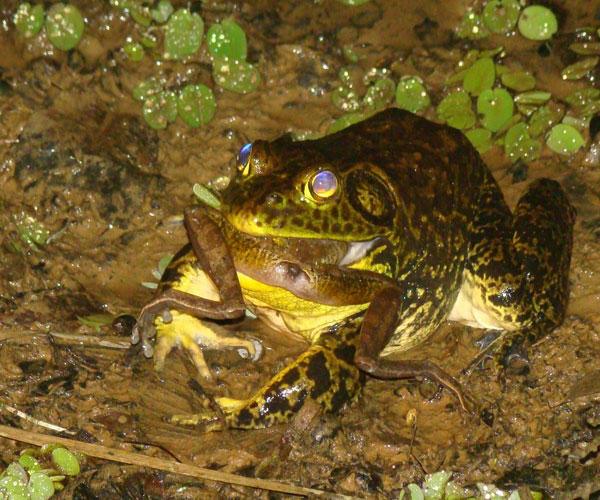
In 1959, the United States sent a missile launch with two frogs, but sadly, those frogs were destroyed in space. In 1970, the U.S. sent bullfrogs (Rana catesbeiana) into space on the Orbiting Otolith satellite to understand how frogs deal with motion sickness. (Otolith refers to the structures in the inner ears of some organisms that sense gravity and motion.)
Weightless Worms
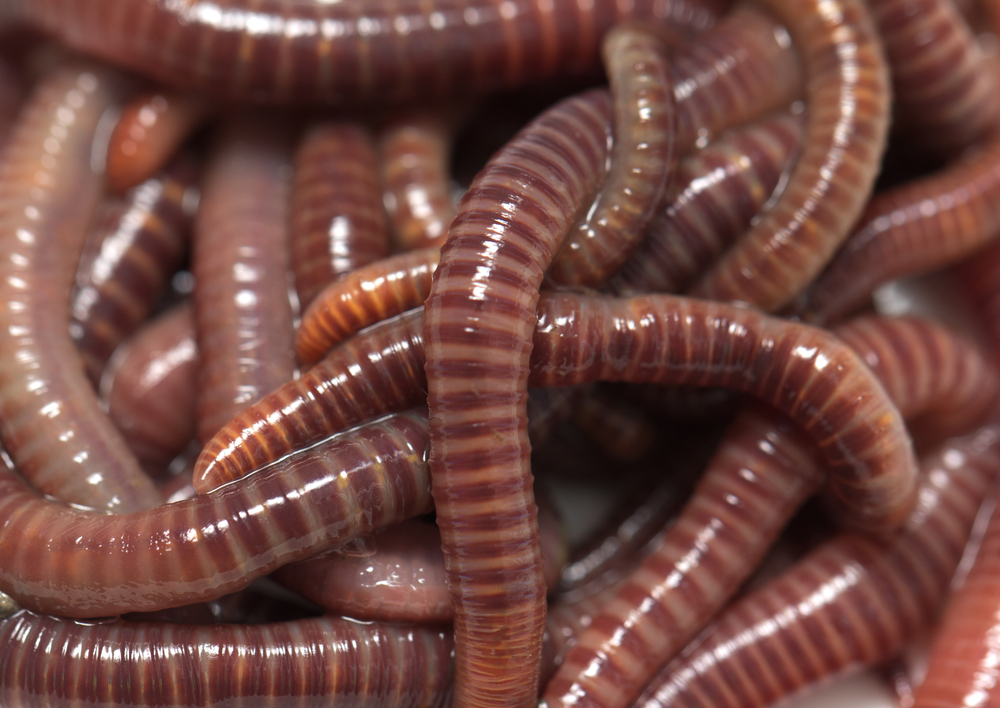
Spiders aren't the only creepy crawlers to make it to space. In 2006 scientists brought 4,000 nematodes, or worms, aboard the International Space Station to see how microgravity affected their floppy bodies. The worms seemed to take to weightlessness well: nematode eggs grew into full-fledged adults, and those adults in turn had offspring. All in all, 12 generations of worms reproduced in space.
Iran's monkey
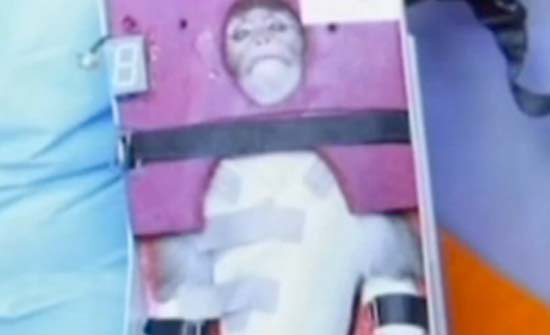
On Jan. 28, 2013, Iranian space officials announced they had successfully launched a live monkey into space, inching closer to the Islamic republic's goal of a manned mission. After a suborbital flight, the space capsule Pishgam (which means "pioneer" in Farsi) returned the monkey alive, according to Iranian news agencies.
In 2011, Iran's effort to launch a live rhesus monkey into space atop a Kavoshgar-5 rocket failed, though what actually happened didn't come out in news reports from the country.
Jeanna Bryner is managing editor of Scientific American. Previously she was editor in chief of Live Science and, prior to that, an editor at Scholastic's Science World magazine. Bryner has an English degree from Salisbury University, a master's degree in biogeochemistry and environmental sciences from the University of Maryland and a graduate science journalism degree from New York University. She has worked as a biologist in Florida, where she monitored wetlands and did field surveys for endangered species, including the gorgeous Florida Scrub Jay. She also received an ocean sciences journalism fellowship from the Woods Hole Oceanographic Institution. She is a firm believer that science is for everyone and that just about everything can be viewed through the lens of science.


